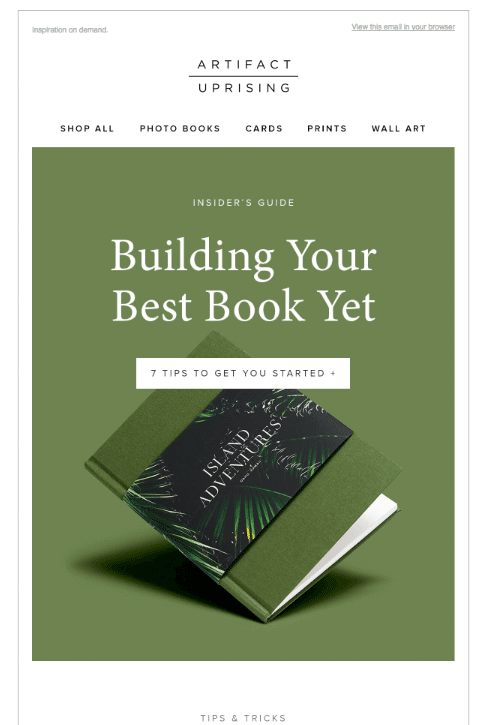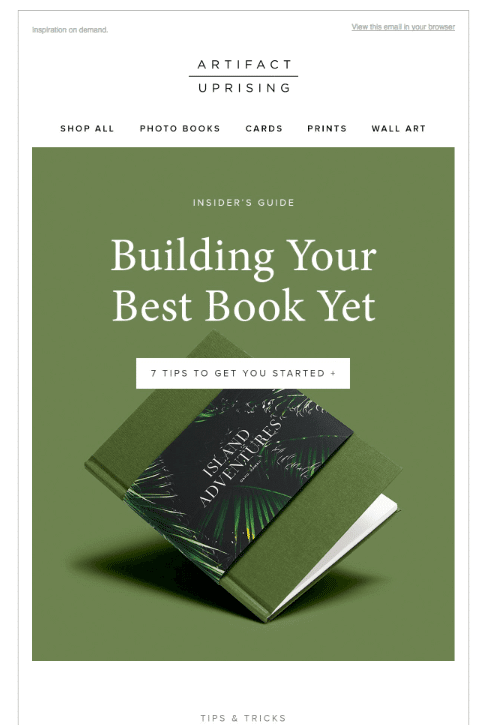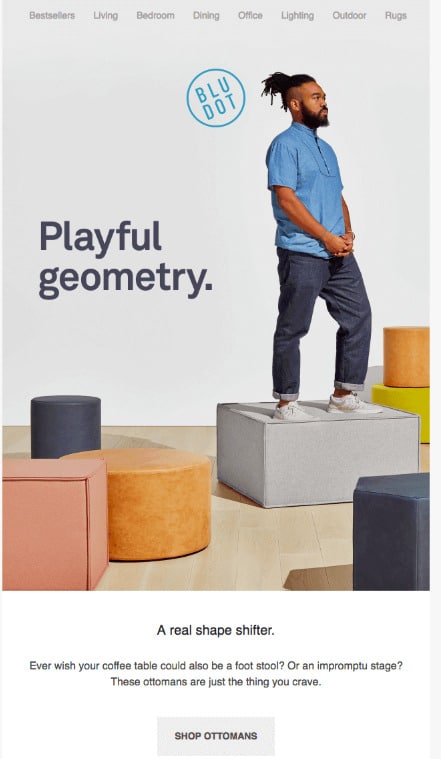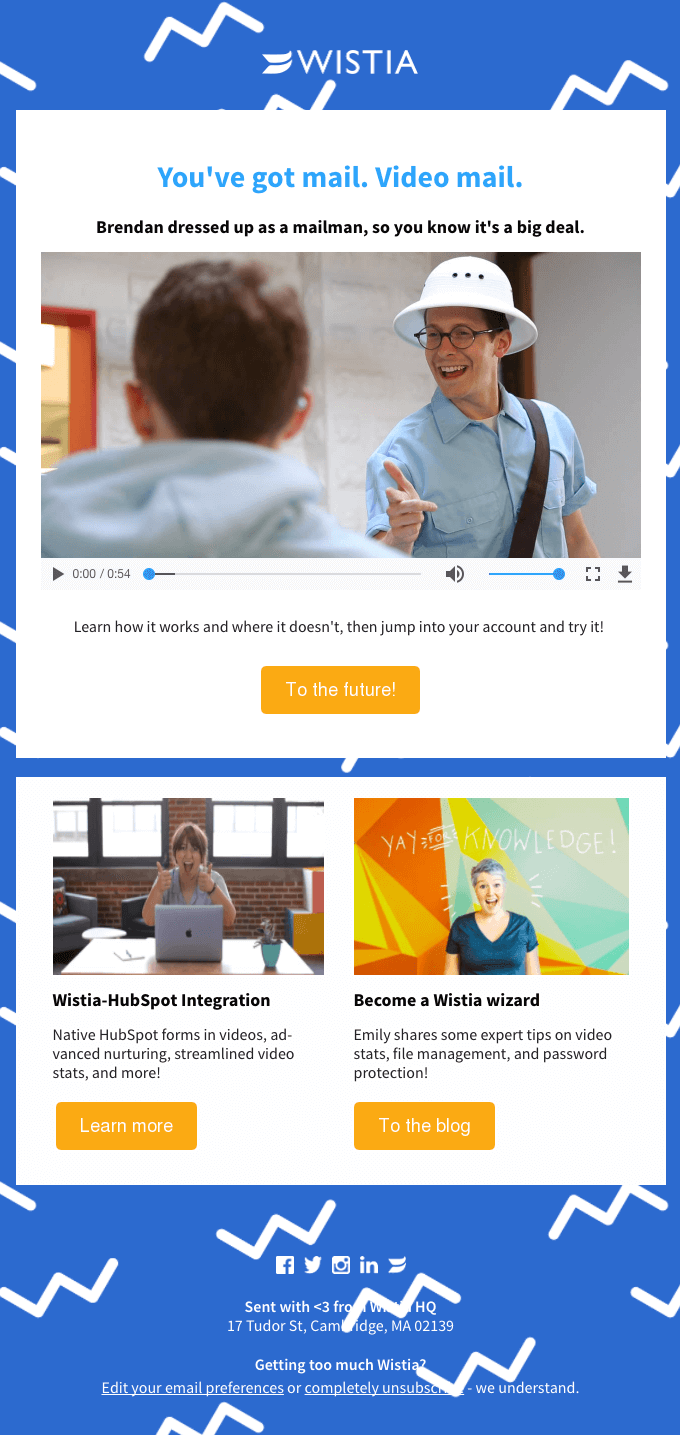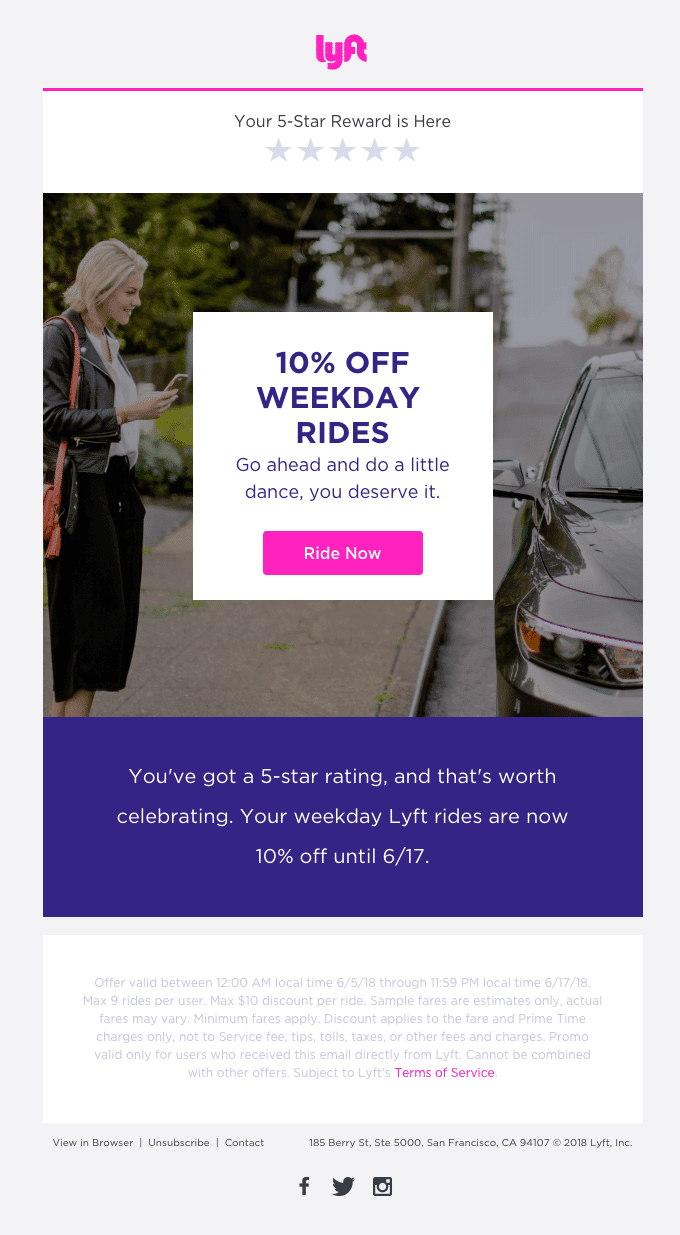How to gain insights from your competitors’ email campaigns
Friendly competition can be a good thing for your business. That said, you don't want to fall behind the competition—so keeping an eye on what they're doing while also establishing your own unique niche is the marketing sweet spot.
Analyzing your competitors' campaigns can also be a great opportunity to stretch yourself and remain on top of your marketing strategies. Instead of trying to ignore what your competition is doing, many successful businesses do competitive analysis to learn from other businesses.
Email marketing, in particular, can tell you a lot about a company, such as how they talk to their customers and who their target demographic is. You can also see how often they are engaging, what promotions they offer, and how they're positioning their product or service.
Looking closely at your competitors’ email campaigns may allow you to improve your own campaigns by adapting successful ideas or avoiding those that didn't work well.
Competitors’ email campaigns: What can we learn?
In this article, we'll cover how to get started with a competitive analysis using competitors’ email campaigns. By the end, you should feel confident in diving into a competitors’ email campaign and know what to look for that could help your own marketing strategies.
What are they offering?
One of the most popular reasons businesses send email is to tell customers about special offers and ongoing sales. From a competitive standpoint, it's important to keep an eye on what others in your space are sending their customers, because they may be winning out on your customers' business by offering better deals and more sales.
When examining an email campaign from a competitor, consider the email from the perspective of someone in your target audience.
If a promotional email from your company were to arrive right beside the message from this particular competitor, all other details aside, which one would be more appealing to subscribers? Don’t just consider the value of the coupons or the discount offers, either.
Look a little deeper into how the offer is presented, as well as when and how the customers can use the offer. Is it extremely time-limited? Are their offers only for certain products or services? Do they use contextual email elements like countdown timers that update as you view the email? And what you can do with this kind of insight?
The obvious solution would be to offer better discounts with eye-catching subject lines and email design. However, another option is to look to other methods of providing value—it doesn't always have to be monetary. If competitors’ email campaigns are simply to push sales, they may be missing out on people who want content that adds value to their inbox. For example, if you offer an insider tip, engaging story, or interactive quiz, it could leave more of a lasting impression on a customer than a one-time discount code.
Image: Really Good Emails
Who is their target audience?
We know how important email personalization is. If you've been around the Emma team for any time at all, you know this is one of our favorite ways to maximize customer engagement and overall happiness.
If you need a little more reassurance, studies show that email personalization can increase click-through rates by 14%, improves overall engagement, and can be the determining factor between whether or not a subscriber opens an email.
Keeping track of unique groups within your subscriber list—also known as segmentation—and personalizing emails specifically for those groups is also a great way to create email campaigns that stand out and scale your success.
If you are already applying these tips, why would it help to know who your competitors are also targeting?
Looking into their personalization and targeting methods could reveal some interesting strategies for reaching your own customer base. For example, you could find out you are missing out on a certain market of consumers or find that your competitors are failing to target one of your most valuable groups.
Using this information, you can design campaigns to appeal to groups you have been missing, double-down on groups that you are winning, and pivot into areas that your competitors appear to be forgetting about.
Of course, what you do will largely depend on how large each segment is and whether they fit the market for your business. However, this simple analysis can help you develop your next campaign and identify new groups to target.
What do their emails look like?
Design is a very important element of email marketing. It’s part creativity and part science.
There are several aspects to take inspiration from when looking at others' emails. Of course, you never want to copy one of their ideas, but seeing what's already out there can help you determine the gaps in the market and how you can fill them.
First, look at how their email is organized.
Is it simple and clean? Are there a lot of pictures to browse? How long is the copy? Most importantly, how can you take any of these tactics one step further in your own campaigns?
For example, if your competitor uses a lot of photos, maybe this will give you confidence in trying an illustrated style that stands out. Or you may still want to use photos, but use more landscape photography, while theirs is focused on people and families.
Think about areas where you already excel and how you can improve aesthetically—a basic product photo might not be as effect as a lifestyle or action shot, for example. Are your images delivering a message of their own to your subscribers? Is it consistent with the rest of your email, or is it just distracting?
Look at the design layout of your competitors’ email campaigns and find ways you can take your own campaigns to the next level.
What are they doing right (or wrong!) with their design, and how can you apply that to your own strategy?
Image: Really Good Emails
What value does their content add?
An email campaign is about more than just delivering special offers or coupon codes. Using email marketing to deliver unique content that adds value to subscribers is the best way to build relationships with subscribers.
A great reason to analyze competitors’ email campaigns is to see what kind of content they deliver. Obviously, you do not want to copy their content, but analyzing their content may give you some ideas for your own future messaging. You may also discover some unique ways of presenting content in different mediums like infographics, podcasts, and videos.
You can learn a lot from the content of your competitors. Find unique angles that they have not considered, deliver more content, and add more overall value for your subscribers.
Image: Really Good Emails
Analyze their sense of brand identity
What a competitor says in their emails says a lot about their marketing strategy. It all begins with the subject line and how they introduce themselves.
A good subject line ensures that your email stands out in an inbox and can help to increase open rates.
Compare your subject lines to those of your competition. Which subject lines are more exciting and more likely to earn clicks? How are your competitors crafting their subject lines?
Next, look at your competitors’ copy in the body of the email as well as their call-to-action copy.
What kind of keywords may they be trying to target, how long or short is their copy, and how do they craft their call to action? All of this can play a very important role in the success of an email campaign.
Sometimes marketers will provide too much content, which puts you at risk of overwhelming the reader. This makes what could be a simple, effective email into something long and difficult to read. You may discover as part of your competitive analysis that a short, easy-to-read email is the most effective.
Sometimes subscribers simply want to see the product you're offering and be able to follow up. While analyzing competitors’ email campaigns you may find some great examples of short copy that gets to the point and delivers great results.
Make your call to action short and easy to understand. You may also wish to create a button near the bottom of your copy to wrap everything up and make it easy for subscribers to click through and go to your website for the offer.
Image: Really Good Emails
Wrap up
Your competitors can reveal a lot about your own marketing.
What is working well and what could be improved? How are your competitors appealing to their subscribers and how can you take it one step further to become the clear email marketing leader in your industry?
Although they are your competition, they can be a great resource for future email marketing campaign ideas and determining your unique place in the market.
Now that you have some great ideas for your upcoming email marketing campaigns, it’s time to get to work building those winning campaigns! If you're ready to jumpstart your email marketing using Emma, let us help. Before you know it, businesses will be looking at your emails for guidance!
MOST RECENT ARTICLES
Want to engage your audience and grow your brand? Try Emma's robust easy-to-use product today.

